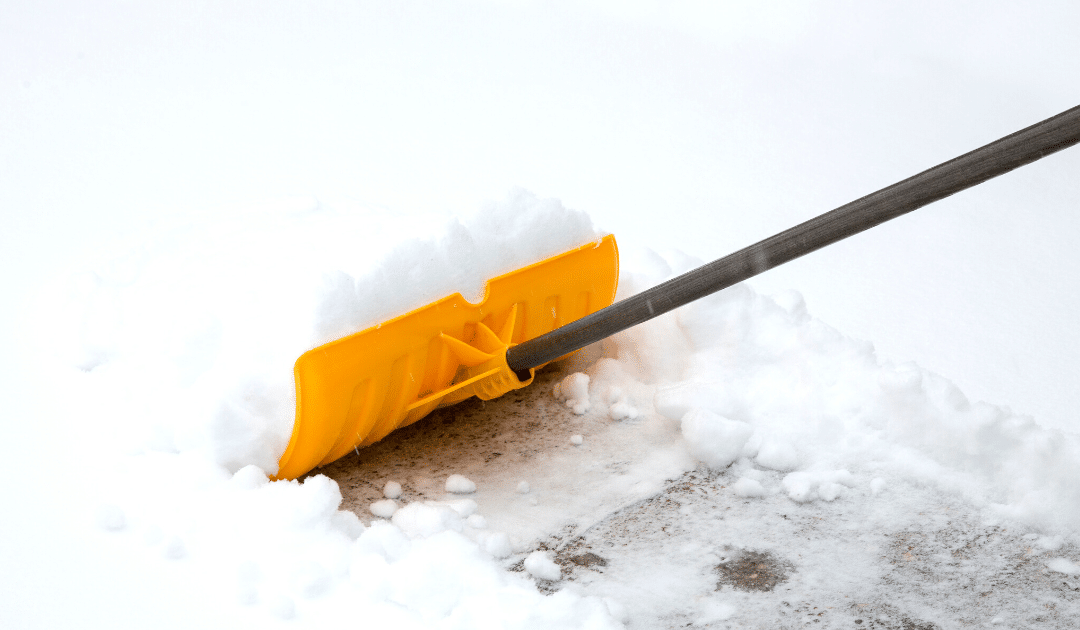
by California Casualty | Homeowners Insurance Info, Safety |
When temperatures start to dip and the days get shorter, snow and ice are soon to follow. If you live in a snow-prone area, it’ll soon be time to pull out the shovel, gloves, and boots and prep yourself for the snow shoveling season.
Here are some tips to stay ahead of the snow, protect yourself from injury, and make this necessary chore a little less taxing.

Before Shoveling: Prepare & Plan
- Warm-up – Do some basic stretches to limber up and prevent injury.
- Wear layers – Layers will keep you warm while allowing for full movement.
- Start early – Shovel new snowfall before it melts and refreezes into a slipping hazard.
- Make a plan – Before removing the snow, figure out where you’re going to move it to.
- Choose the right shovel – Make sure your shovel fits your hands and frame. Choose from ergonomically-designed models that can reduce bending and strain.
- Consider wax – Coating your shovel blade with wax (car wax is fine) will prevent heavy snow from sticking and freezing to the blade. This works best on metal shovels.

While Shoveling: Technique & Habits
-
- Push, don’t lift – Pushing snow is easier on your body than lifting it. In times where lifting is unavoidable, be sure to:
- Bend your knees and keep your back straight.
- Position your feet hip-width apart and use your legs for leverage.
- Avoid twisting with a loaded shovel.
- Keep your shovel close to your body — This will help prevent injuries.
- Keep it bite-sized – Shovel smaller loads rather than large ones. Also, focus on the powder rather than heavy ice.
- Change up your grip – To prevent blisters and strain, switch up left- to right-handed shoveling. Also change it up with palm under/ palm over.
- Take breaks – Especially if the snow is wet, be sure to hit pause every 20 or 30 minutes.
- Stay hydrated – In cold weather, it’s easy to forget to hydrate, so be sure you have water available and remember to drink it.
- Shovel snow while it’s falling – You’ll lighten your workload if you periodically remove snow while it’s falling.
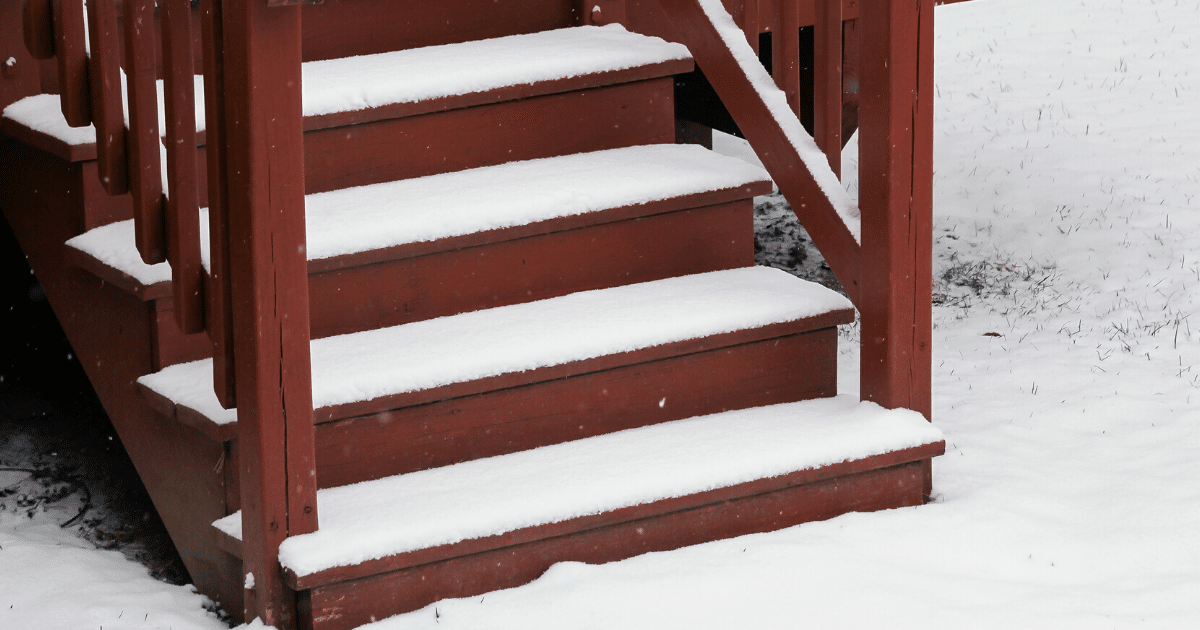
Managing the Yard
While shoveling, keep your yard and home exterior happy by keeping these tips in mind.
-
- Don’t let snow pile up – If branches are weighed down with snowdrifts, gently brush the snow off to prevent branches from bending under the weight and snapping. And when you’re shoveling near them, remember to not dump the snow on plants.
- Make a windbreak – If it works for your yard, you can deposit each shovelful of snow to form a barrier that shields shrubs and plants from wind damage.
- Clear snow from the dryer vent – A blocked dryer vent is a fire hazard and can put your family at risk of carbon monoxide poisoning. Make sure your vents are clear of snow build-up.
- Keep the fire hydrant clear of snow – If you have a fire hydrant at the front of your yard, make sure part of your maintenance is to keep it clear in case fire crews need to locate and use it.
- If you park in the driveway – Clear a path to the driver door first, so that you don’t have to trudge through the snow to get to it.
As long as there’s snow, there will be snow shoveling. By using the tips above, you can make this task a bit easier and prevent injuries in the process.
This article is furnished by California Casualty. We specialize in providing auto and home insurance to educators, law enforcement officers, firefighters, and nurses. Get a quote at 1.866.704.8614 or www.calcas.com.

by California Casualty | Educators |
If anyone deserves a supersized, overflowing stocking this year, it’s teachers. These heroes of the (virtual) classroom have been going above and beyond, keeping our kids on track and learning during an unexpected pandemic – no small feat!
Give them the big thanks they deserve by making this year’s holiday gift extra special. Personalize it if you can (ask your child if they remember their teacher mentioning any favorite pastimes, hobbies, or likes). If you don’t have much information to go on, practical gifts are always appreciated – especially by teachers and administrators who juggle so much every day.
Start with any clues your child might have, check out the list below, and then build from there!

1. Handwritten card or note – A thoughtful, heartfelt holiday card and message from your child will make their teacher’s year. These are often the gifts that stay with educators for years to come.

2. Gift cards – You can’t go wrong with gift cards. Target, coffee, Amazon, gas, Apple, restaurants, iTunes – the list is endless. They’re a super practical gift that will definitely get used!

3. TpT e-card – Help educators take a lesson planning load off this holiday by giving them a gift card for their Teachers Pay Teachers (TpT) account. Shop and send it in seconds here.

4. Office supplies – Besides needing supplies to keep classwork and lessons organized, many teachers secretly adore creative, whimsical, and cool supplies. Check out sticky notes, to-do list pads, novelty paper clips, themed stickers, daily planners, and more.
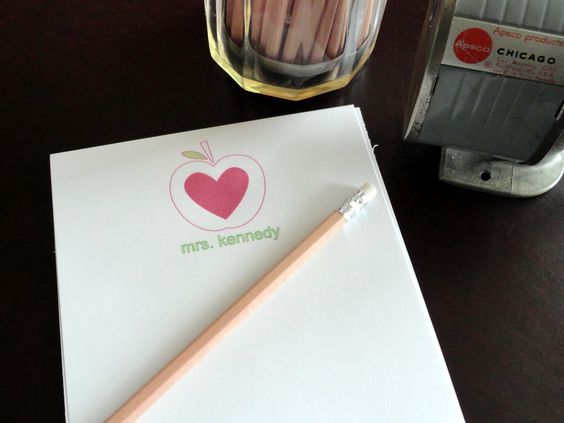
5. Customized stationery – There are all kinds of online services that let you customize paper goods and stationery items such as notepads, note cards, letter writing paper sets, address labels, pencils, thank you notes, and stickers.
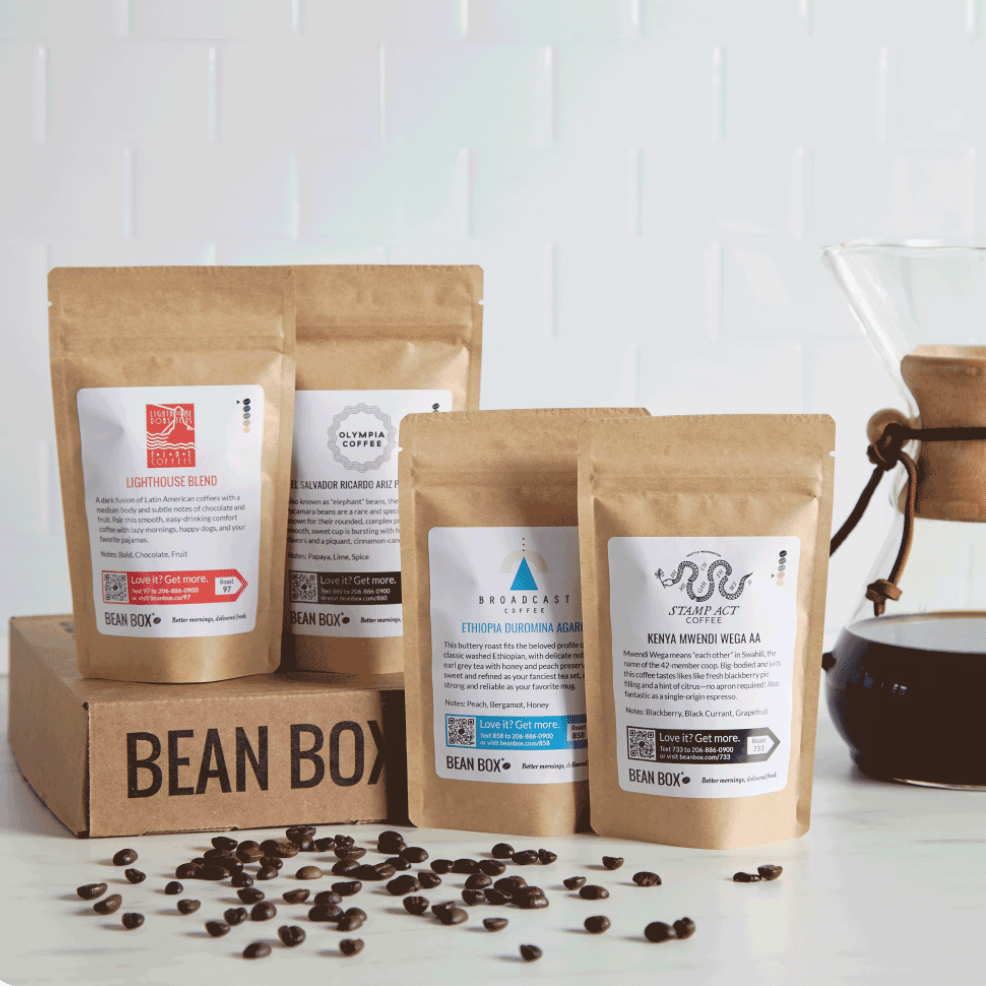
6. Coffee – Educators may be one of the most caffeinated of professionals. How about getting them a gift certificate or subscription for a new roast to change up their morning ritual? If this one seems a little expensive, don’t worry a few bags (or Kcups) of their favorite cup of Joe should do the trick 😉
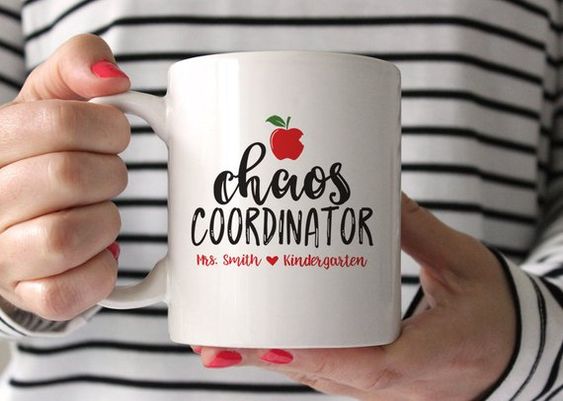
7. Mug or tumbler – Help teachers stay hydrated (or caffeinated!) all day long with a quirky, contemporary, or inspirational mug. Teachers are famously oftentimes mug collectors, so this is a pretty safe bet.
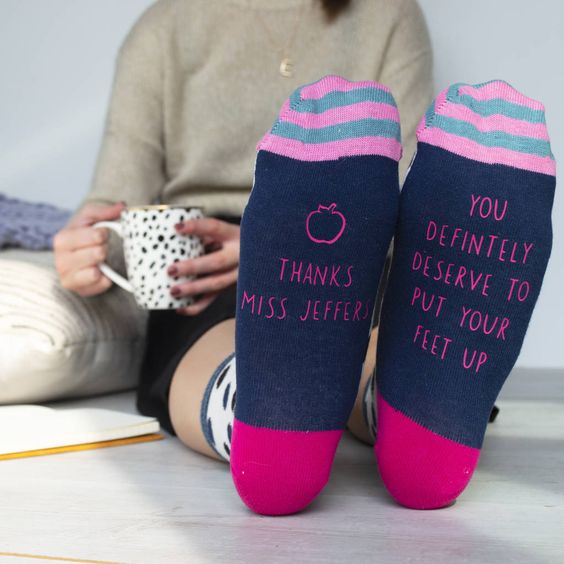
8. Fun, festive or teacher-themed socks – There are a million and one different novelty-themed socks online. These won’t break the bank (or break on the way to school with your child) and offer the warmth of the hugs that we can’t share today. Plus, sizing is a no-brainer!
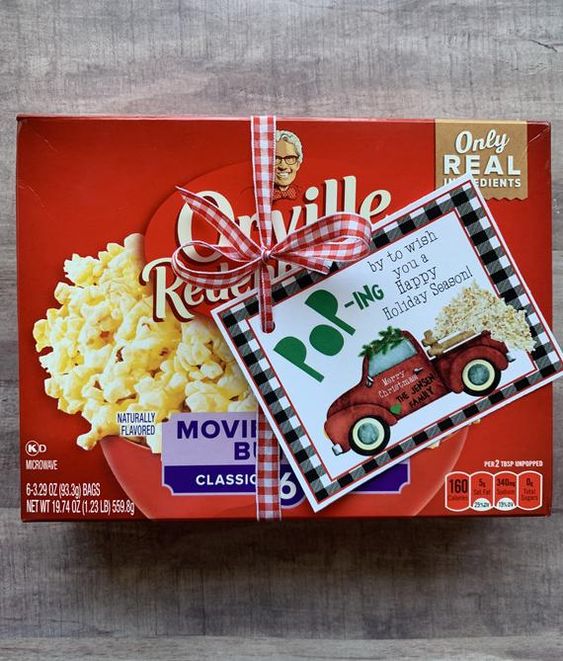
9. Snacks – Teachers barely get enough time to finish their lunches – even ones who work remotely. So, you can never go wrong with snacks. Don’t worry, they aren’t picky – chocolate, popcorn, candy, chips! Let’s load those snack drawers.

10. A nice pencil pouch – A high-quality zipper pouch is the perfect organizer for highlighters, markers, pens, pencils, and correction tape. There are a ton of great designs out there too – good luck trying to choose!
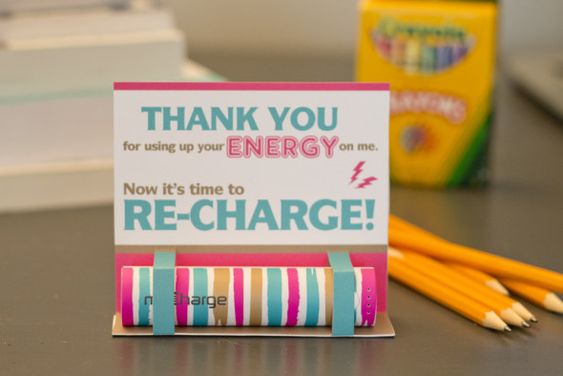
11. A charging station – We’re all living on our devices right now – and running down batteries quicker than ever. Keep your child’s teacher charged for the day by gifting a portable charger, charging station, extra charging cords or USB power bank.
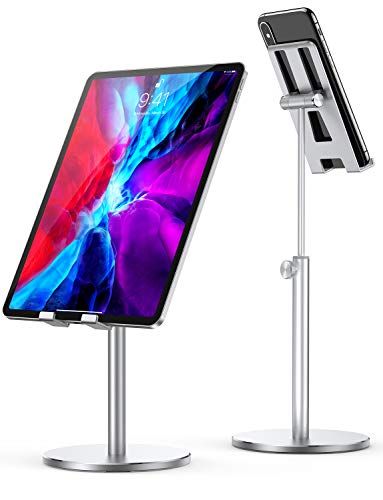
12. Tech gadgets – Make teachers’ remote work lives a little more enjoyable with gadgets such as an iPhone or IPad tripod, ring light, or universal cable.
And what not to get….
As you narrow your list, here’s a gentle reminder of some things to leave off of it. Though well-intentioned, the following presents either aren’t very practical or are gifted so often they end up collecting dust in closets or cupboards.
- “World’s Greatest Teacher” clothing, cups, posters, etc.
- Ornaments and other holiday knick-knacks
- Stuffed animals
- Jewelry
As with all gift-giving, thoughtfulness counts more than anything else during the holidays. A little brainstorming with your child could well result in the perfect gift – and extra holiday cheer to fuel their teacher for the New Year ahead.
Happy gifting and happy holidays!
This article is furnished by California Casualty. We do not take ownership of any photo featured in this article; all photos have been linked to their owner. California Casualty specializeas in providing auto and home insurance to educators, law enforcement officers, firefighters, and nurses. Get a quote at 1.866.704.8614 or www.calcas.com.

by California Casualty | Educators |
It’s the most wonderful time of the year! The excitement of the looming Winter Break can be felt in every classroom, and what better way to celebrate than with some fun and festive Bulletin Boards? It’s officially to de-stress and have fun creating some winter bulletin boards for your kids and classroom.
We’ve pulled together our favorite ideas for Winter, Christmas, and more below. Check them out! And for all the teachers teaching remotely, you don’t miss out on the fun! Use these ideas for your Zoom backgrounds, or even create (fake) bulletin board on a blank wall at home!
1. School Door…or Gingerbread House?
Go big or go home, right? You could even put kid’s names or pictures on the gumdrops!

2. Take an #sELFie
Literally, the cutest thing we have ever seen. Take student #sELFies and send them to parents as Christmas cards!

3. A Charlie Brown Christmas
Throw it back to your childhood, with a classic Snoopy bulletin board. You can even add each child’s name or photo on the lights, like they have below.
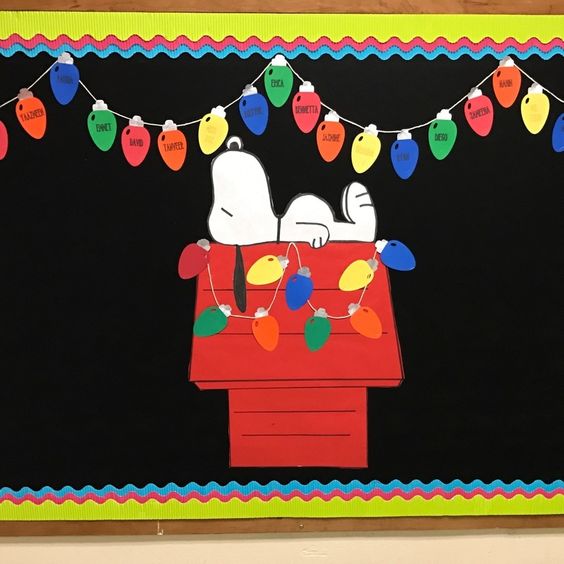
4. A Kindness Christmas Tree
Make a countdown until break and reveal a new kindness quote each day.

5. Frozen-Themed
Winter isn’t complete without Olaf in your classroom!

6. Under Elf Surveillance
This elf can be on mask duty in the hallway OR or classroom duty, just put it on your door.
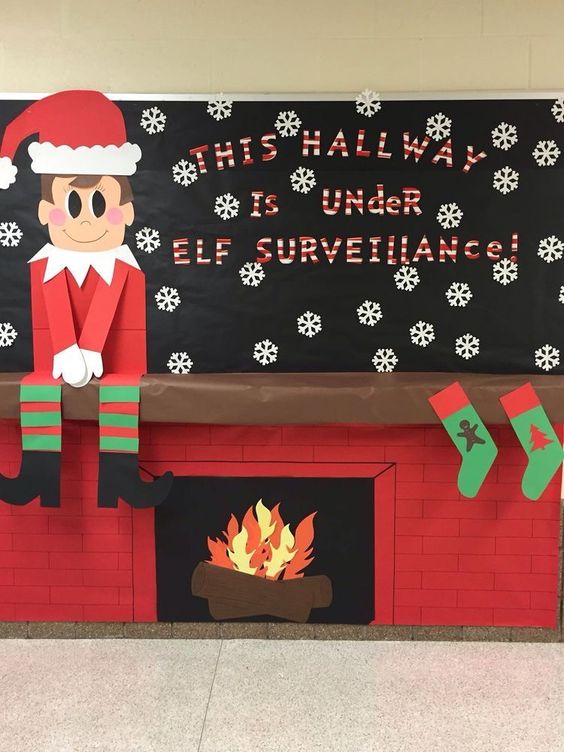
7. ….Or You Could Use a Different Elf
You could use so many different sayings on this Buddy the Elf Bulletin Board.

8. Wall of Joy
We’d be lying if we didn’t tell you this one was our favorite. Put this in the hall and have each child write what brings them joy 🙂 (for sanitary reasons, be sure to have them use their own writing tool)
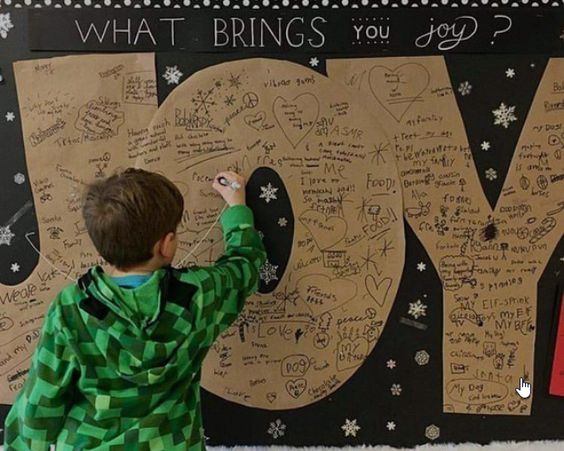
9. Rudolph ft. DIY Christmas Ornaments
Have kids make their own ornaments! Want something a bit more simple? Just showcase the ornaments hanging from the top of the bulletin board instead.
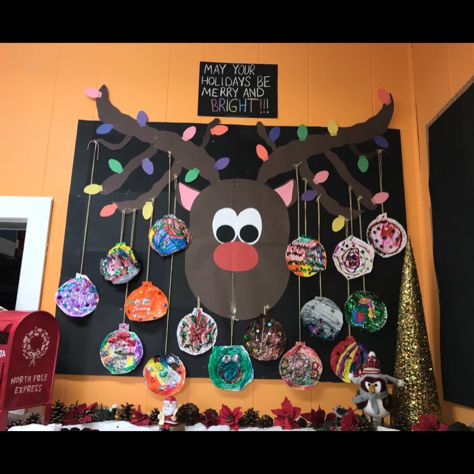
10. Reading Makes You Bright
We love the symbolism! Except in the photo, all of the snowflakes are the same…So, be sure to have your students each make snowflakes to hang on your board!

11. Don’t be a GRINCH be Kind
Because who doesn’t love The Grinch?
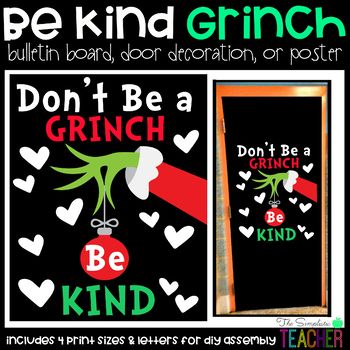
12. Oh Deer! Christmas is Almost Here
Each child can make their own unique reindeer.

13. Chillin’ With My Snowmies
You could leave it as is, or for a larger board have each student make a snowman or Santa-gnome!

14. If Santa Was Stuck In My Chimney…
You can’t beat a funny holiday writing prompt!

15. A Tree Made of Border
So we know this technically isn’t a bulletin board, but what a cool idea to make a tree out of extra border paper!
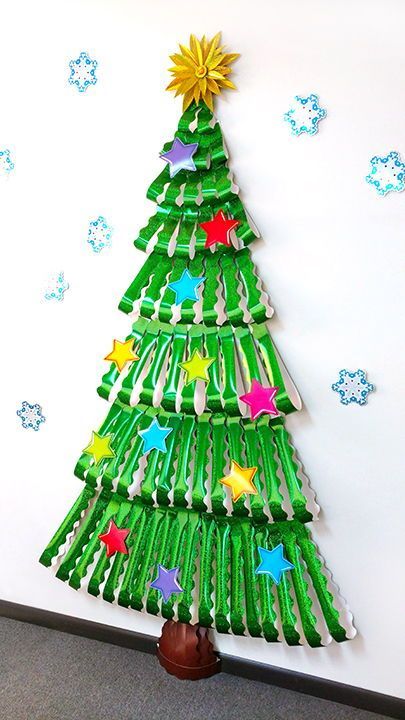
16. Fa-la-la Singing Reindeer
Holiday cuteness overload
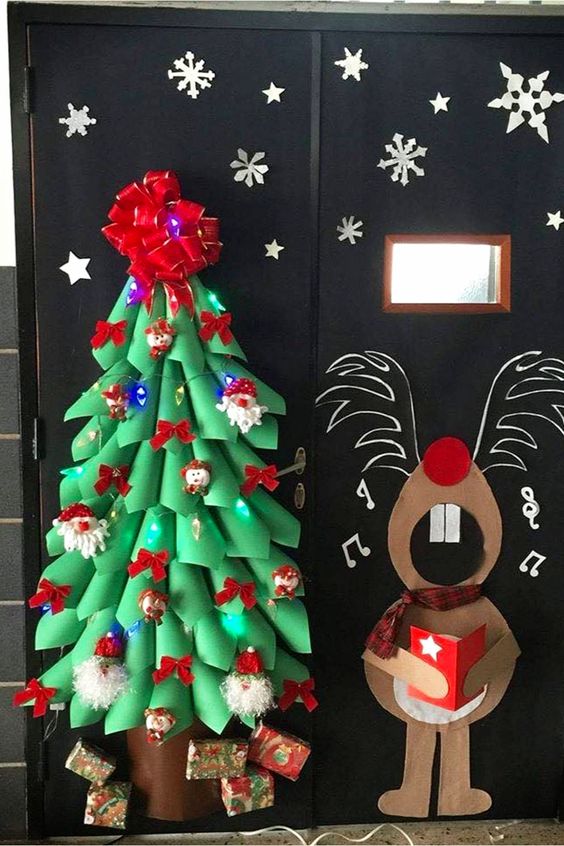
17. Learning is a Gift
A classic, that is easy to create and really make your own. Put subjects or children’s names on the presents!
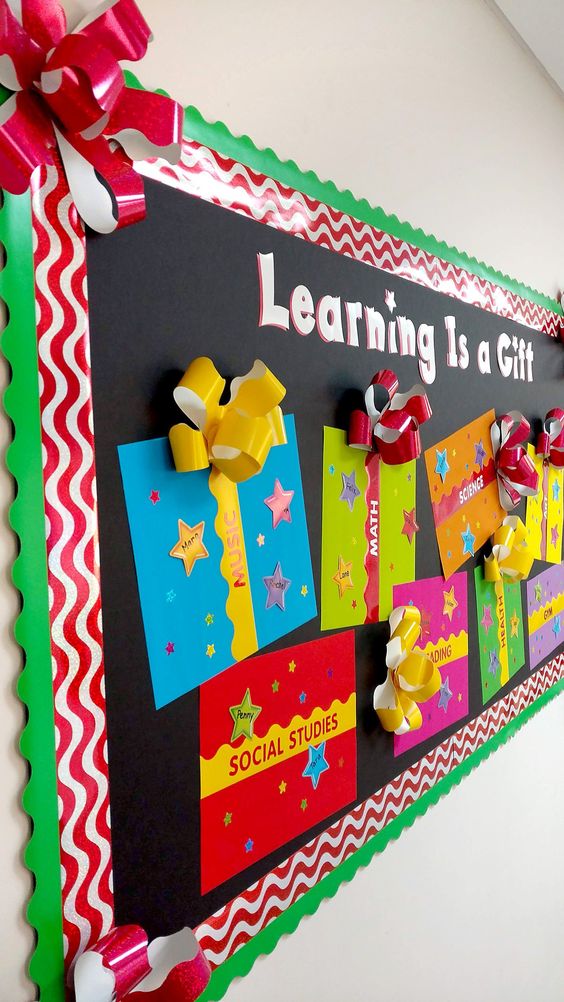
18. Loco for Cocoa
Another easy writing prompt idea, kids can write their perfect hot cocoa recipe and decorate their own mug.
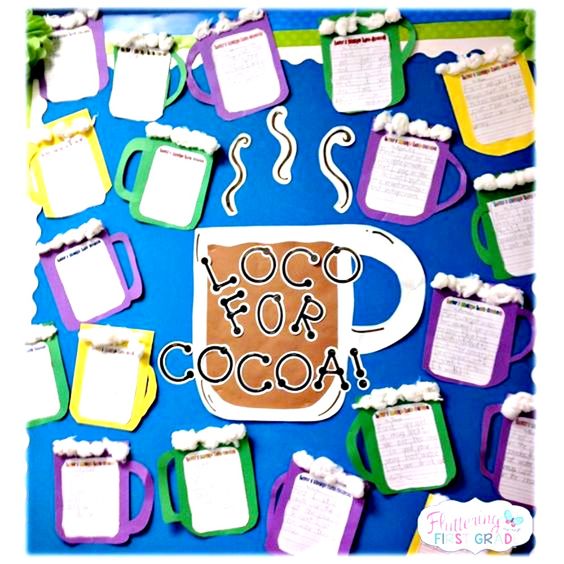
19. Stockings Hung By The Chimney With Care
Keep it nice and cozy this winter with this cute classroom fireplace. Kids can even make their own stockings and hang them up for Santa!
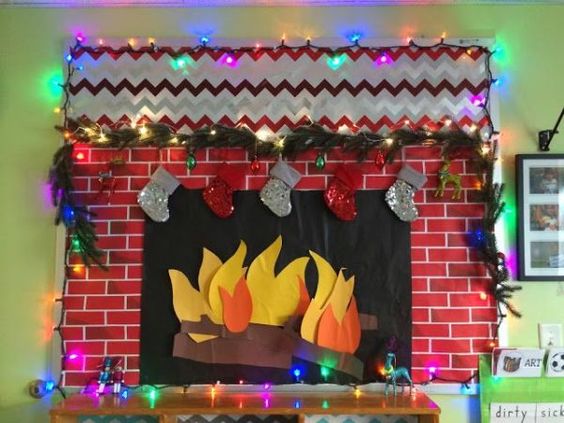
20. Teacher-Elves in a Snow Globe
Don’t be afraid to make a silly bulletin board like this, it’s guaranteed to make your student’s day!
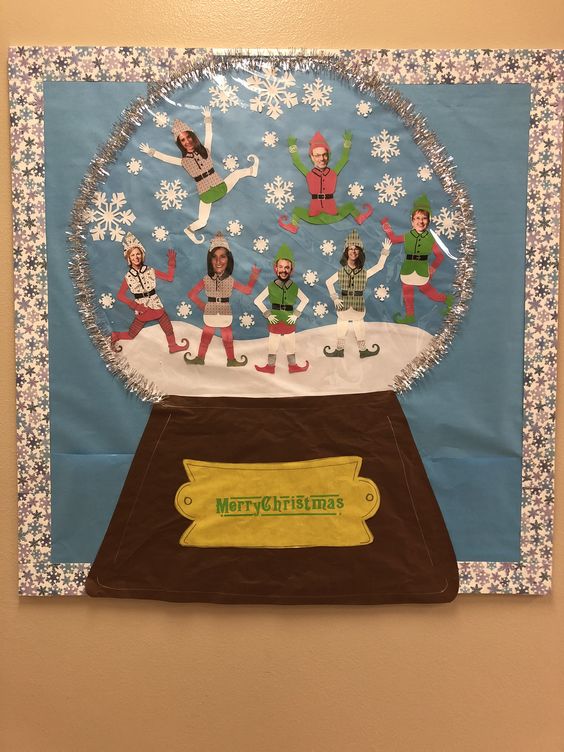
21. Fal la la la llama
Because Christmas doesn’t always have to be able elves and reindeer.
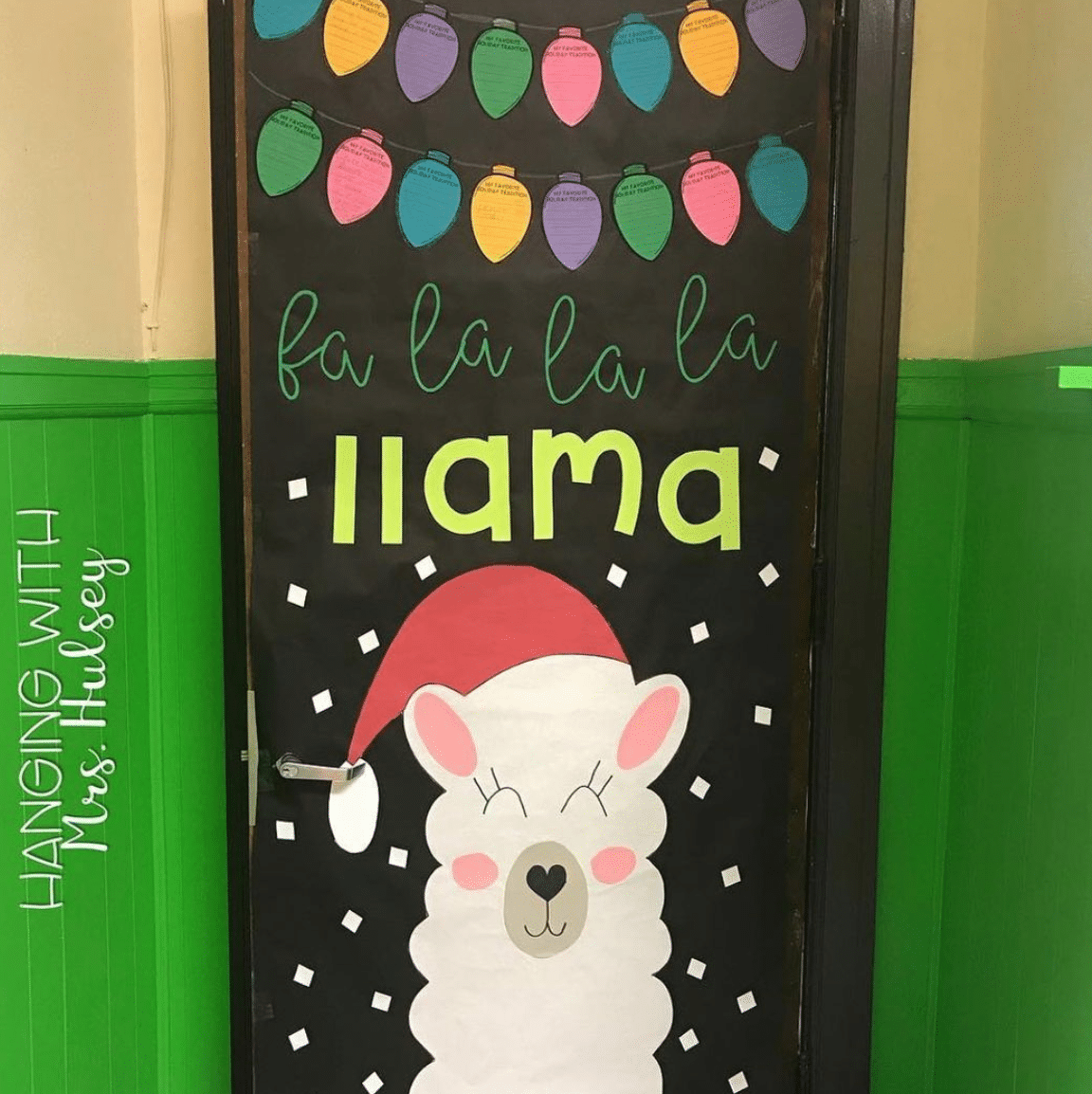
and, last but not least, our honorable mention…
Frosty’s Baby Picture
A true work of art.

Head over to our Pinterest for more Christmas & Winter Bulletin Board options! Don’t forget to give us a follow at California Casualty to stay up to date on every new idea we discover! Scan our Pincode with your Pinterest camera to follow:
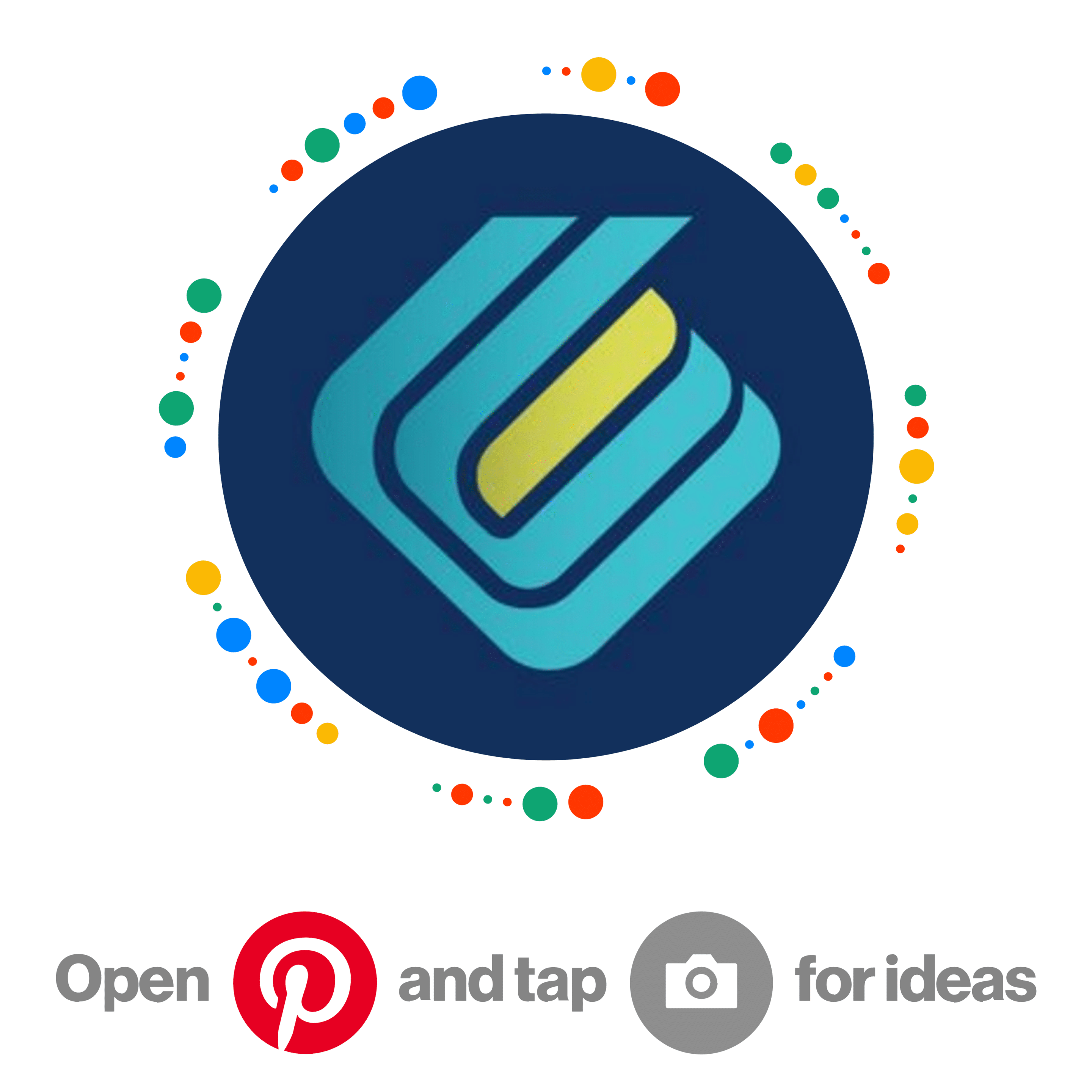
This article is furnished by California Casualty, providing auto and home insurance to educators, law enforcement officers, firefighters, and nurses. California Casualty does not own any of the photos in this post, all are sources by to their original owners. Get a quote at 1.800.800.9410 or www.calcas.com.

by California Casualty | Homeowners Insurance Info, Safety |
Did you know that cooking fires in residential buildings happen more often on Thanksgiving Day than any other day of the year? Or that peak timing for fires is from 10am – 4pm — right when everyone’s preparing their turkey day feasts?
According to the National Fire Protection Association, unattended cooking is by far the number one contributing factor of cooking fires and fire deaths.
The following tips from NFPA will help you avoid the common pitfalls and serve up a holiday full of delicious dishes, happy memories, and a safe celebration.

Remember to:
-
- Stay in the kitchen when cooking as much as possible:
-
- If you’re frying, boiling, grilling, or broiling food and need to leave the kitchen for even a short time, turn the stove off until you return.
- If baking, simmering, or roasting, check it regularly, stay in your home, and use a timer to remind you when it’s close to done.
- While cooking turkey, check on it frequently, and do not leave your home.
- Test your smoke alarms a few days before the holiday to make sure they’re working.
- Keep oven mitts, food packaging, towels, and any other flammable materials away from your stovetop.
- Keep the kitchen floor free of tripping hazards.
- Don’t use the stove or stovetop if you’re sleepy or have consumed alcohol.
- Be mindful of children:
- Keep them at least 3 feet away from the stove.
- Make sure knives, electric cords, and matches/lighters are out of reach.
- Ensure they stay away from hot food and liquids.
- Never leave them alone in a room with a lit candle.

Prevent a Fryer Fire
Deep frying turkeys is all the rage — and unfortunately causes plenty of fires and injuries every year. If you plan to fry this year, follow these safety tips from the U.S. Fire Administration:
-
-
- Only use a unit specifically made for frying turkeys — don’t try to adapt cookware you already have.
- Only use the fryer outdoors on a sturdy, level surface that is a safe distance from anything flammable. Remember that fryers can easily tip over, spilling hot oil. Maintain a 3-foot zone free of kids and pets to protect against injuries.
- Make sure your turkey is fully thawed before frying it — a partially frozen bird will cause hot oil to splatter.
- Ensure that you use the correct amount of oil. An overfilled fryer will spill over when the turkey is placed inside.
- Do not leave the fryer unattended. A 15-pound turkey will take about 45 minutes to cook, so prep in advance so that you can stay outside the whole time.
- Use gloves and have extra potholders and supplies nearby. The pot, lid, and handles of the fryer can get very hot.

In Case of Emergency
A small grease fire can erupt suddenly — even despite best efforts at prevention. Here are some basic steps from the NFPA if one erupts on your watch.
-
-
- For an oven fire, turn off the heat and keep the door closed.
- If on the stovetop, smother flames by putting a lid or baking sheet over the pan, taking it off the heat, and turning the burner off. Leave the pan covered until completely cooled.
- Do NOT pour water on a grease fire — it will make it worse or even spread the fire. A lid or cooking sheet is best; pouring baking soda or salt on small flames can also help extinguish them.
- When in doubt, get out of the house. Close the door behind you and call 911.
The holidays are busy. Between cooking and hosting time and focus can feel scant. To let you focus on cooking — safe cooking, that is — enlist the whole family to help. Tasks such as shopping, decorating, and cleaning can be delegated. While in the kitchen, make sure someone else is on point for entertaining and taking care of things in the rest of the house. Finally, prepare activities (games, puzzles, books, etc.) ahead of time for children so that they’re occupied and out of the kitchen.
And most important: enjoy that precious time with your family — over a delicious, beautiful meal!
This article is furnished by California Casualty. We specialize in providing auto and home insurance to educators, law enforcement officers, firefighters, and nurses. Get a quote at 1.866.704.8614 or www.calcas.com.

by California Casualty | Auto Insurance Info, Safety, Travel |
Whether you’re making the trek to visit relatives for the holidays or finally taking that delayed summer getaway, you may be getting ready to hit the open road again.
Of course, a road trip during a pandemic is quite different from our carefree road trips of the past. But with some prep work, some new safety habits, and a go-with-it attitude, you can still make your trip memorable and safe.

Service and Prep Your Vehicle
You want to be comfortable and safe on your trip, so put your mind at ease by giving your car a little love before heading out.
-
- Get it serviced. Schedule your car for a full service and inspection, which may include oil change, fluids check and top-off, tire check, brakes, etc.
- Double-check the emergency kit. Add, update, and replace items as needed. Use our handy essentials emergency kit article as your guide. Make sure it includes a first aid kit.
- Add Covid-specific supplies. Throw in extra masks, sanitizing wipes and gel (at least 60% ethanol or 70% isopropanol), and disposable gloves into your kit.
- Pack for comfort. Knowing you’ll be spending hours on the road, pack music, tablets, blankets, comfy shoes, and flip-flops, as well as jackets and easy-to-throw on layers. Sunglasses, stick-on sunshades, and sunscreen will help protect against all those UV rays (though not as hot in autumn, the rays can still do damage).
- Limit shopping along the way. Bring along things from home that you know are not contaminated, such as snacks, bottled water, medicine, phone chargers, and trash bags.

Plan It Out & Prep Ahead of Time
A lot has changed in the last several months, which means you’ll need to do a little more legwork ahead of your trip.
-
- Map out your route. Even if you’ve made this trip before, there may be unexpected closures along the way. Use a mapping app to get ahead of any problem areas.
- Check states and counties for Covid-19 case counts. Avoid traveling through areas with high breakouts or infection rates.
- Check travel restrictions for your destination and locations along the way. Some states and cities are requiring travelers from other areas to quarantine for 14 days upon entry (or are outright barring visitors).
- Before setting out, download one or two payment apps such as Apple Pay, Google Pay, Samsung Pay, and Android Pay to limit the number of germy PIN pads you have to touch.
- Have a plan in case you or a family member gets sick. This virus is wily, and sometimes sickness happens despite all your best prevention efforts. So have a contingency plan ready to go.

Have a Plan for Dining & Restaurants
Restaurants can be especially risky as hotspots for coronavirus transmission. Reduce yours and your family’s risk with these tips.
-
- Bring your own stash of non-perishable food in case of restaurant closures or limited dining options.
- Utilize drive-through, delivery, take-out, and curbside pick-up options if you want to reduce your exposure. Pack a family-sized picnic set (and blanket) ahead of time so you’ll have utensils and plates at the ready. Scout out parks or lakes where you and your family can eat.
- If a restaurant offers outdoor seating, choose that over sitting indoors. Bring coats and lap blankets if it’s chilly.
- If dining indoors, choose restaurants that maintain social distancing between tables indoors. Wear your mask as much as possible.

Know Your Game Plan for Hotels & Lodging
Because hotels are high-traffic areas, it’s important to take extra safety steps before, during, and after your stay.
-
- Research hotels and reserve in advance.
- Call ahead and ask about their policies on cleaning and disinfecting, as well as contactless check-in and check-out.
- Whatever the hotel’s stated cleaning policies, make sure you swipe high-touch areas in your room with disinfectant wipes: doorknobs and handles, bathroom fixtures and counters, light fixtures, TV buttons, and remote control, and any surface where you might put bags, computers, purses, etc.
- Ask the front desk to forgo housekeeping services, as it limits the number of people in your room.
- Minimize use of high-traffic areas such as lounge areas, dining areas, saunas, fitness centers, and salons.

Must-Do’s for the Entire Trip
Make a habit of the following, and safety will soon become second nature.
-
- Follow the basics at all times: Frequent handwashing, mask-wearing in indoor public spaces (and outdoors where you can’t socially distance), and 6 feet distance between you and others outside your household.
- Limit the number of stops along your route.
- Use contactless payments wherever possible.
- Be cautious when touching fuel pumps – diligently use hand sanitizer after every use or use disposable gloves.
- Use hand sanitizer every time you enter your vehicle (same goes for family members), which will keep your vehicle’s interior clean.
- Wipe down your car’s interior every day – preferably multiple times. Especially germy surfaces include door handles, steering wheel, gear knob, stereo and temperature control dials, cup holders, and seatbelts.
- Have your whole family make a habit of wiping down their phones multiple times a day – phones may well be our most-touched item.
While road trips in 2020 may be nothing like those of the past, yours can still be something you and your family look back on with fondness, good feels, and probably some laughs as well.
This article is furnished by California Casualty. We specialize in providing auto and home insurance to educators, law enforcement officers, firefighters, and nurses. Get a quote at 1.866.704.8614 or www.calcas.com.



















































